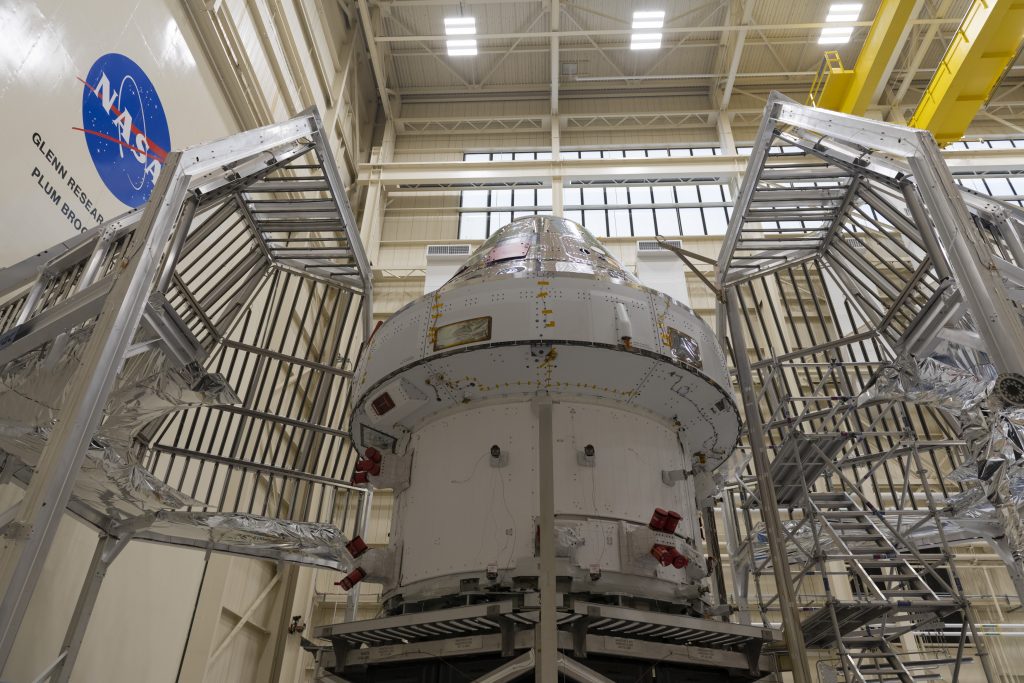After the first Orion arrived at the NASA’s Plum Brook last week, technicians got straight to work preparing the spacecraft for its first test: two months subjected temperatures ranging from –115°C to 75°C in vacuum – the same temperatures it will experience in direct sunlight or in the shadow of Earth or the Moon while flying in space.
Orion is placed into a thermal cage in preparation of getting its first feel of space. Called the Thermal Enclosure Structure (TES), that will radiate infrared heat during the tests inside the vacuum chamber.
Orion will be subjected to temperatures at Plum Brook ranging from –115°C to 75°C in vacuum for over two months non-stop – the same temperatures it will experience in direct sunlight or in the shadow of Earth or the Moon while flying in space.
The extreme temperatures fluctuations from flying in-and-out of sunlight and shadow in space are recreated using Heat Flux, a specially-designed system that heats specific parts of the spacecraft at any given time. In addition to the heater cage, Orion will be surrounded on all sides by a set of large panels, called a cryogenic-shroud, that will cool the spacecraft to the cold background temperatures of space.
The tests will show that the spacecraft works as planned and adheres to the strictest safety regulations for human spaceflight. The European Service Module has 33 thrusters, 11 km of electrical wiring, four propellant and two pressurisation tanks that all work together to supply propulsion and everything needed to keep astronauts alive far from Earth – there is no room for error.



 Automated Transfer Vehicle page
Automated Transfer Vehicle page ATV blog archive
ATV blog archive
Discussion: no comments